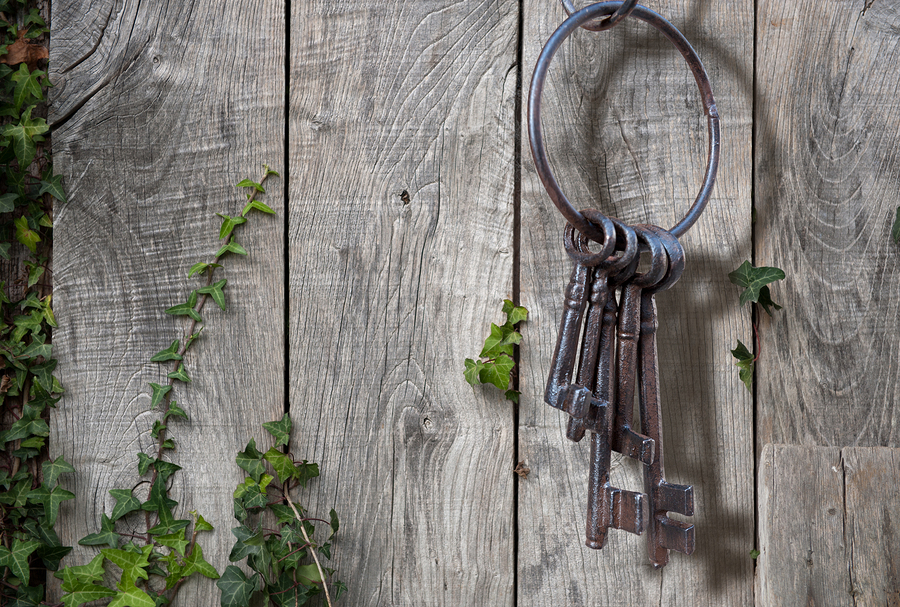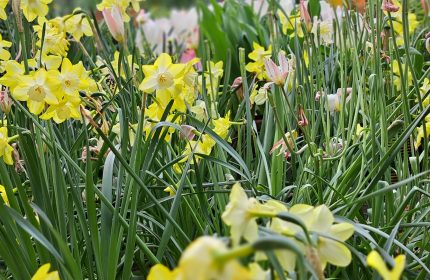Gardener’s Old Wives’ Tales
These gardening stories have been passed on for millennia, some are outrageous, some wise advice, some folklore and fables based on the weather, agriculture, different parts of the country, imported practices from other parts of the world – a real mish-mash.
It’s like family secret cookery recipes, some do stay as secrets especially in the way giant or show vegetables are grown. Most are shared with fellow gardeners as folk in horticulture love to share their expertise, seeds, cuttings/offshoots, young plants and excess produce. The stories were shared in the local pub or over a cup of tea or something stronger down at the allotment, or over the garden fence/gate!! So which is sound gardening advice or not?
The humble spud or potato, plant your first Earlies at Easter:
The Easter feast moves as you all know, potatoes are tender and very susceptible to frost so this advice needs to be taken with a pinch of salt. If the ground is cold and frosty, there is no point in planting potatoes. I can remember many Easters with snow!! Wait till the ground warms up?
Don’t water plants in bright/hot sunshine?
As a youngster, I remember being told this but in practice another myth. If you see a dry, wilting plant in a pot, do you leave it to die? Of course you don’t. On tender glasshouse crops scorching can occur if you water over the foliage on exceptionally hot days, so as long as you water the compost around the base of the plant it will recover quickly – hydrangeas, indoor azaleas for example. The best policy is to water early in the morning or evening – less evaporation. A proper soaking and not over the foliage can encourage fungal diseases.
Tie up your Daffodils?
This is definitely not good practise. Narcissus need to die back naturally. The leaves cannot photosynthesise properly if knotted up. Better to water and feed after flowering to build up the bulb for next year, use a high potash feed.
Crocs/gravel in the bottom of pots for drainage?
Research carried out shows this isn’t effective in fact it makes drainage worse! One piece of broken pot over the drainage hole to stop the soil coming out. If you need more drainage for certain plants mix horticultural grit or perlite with your compost and use pot feet under the pots to raise them off the ground.
Compost and bone meal in a hole when you plant trees and shrubs?
Since I went to college some 40 years ago, things have changed a lot and you never stop learning in horticulture. Compost and bone meal in the planting hole is now proven not to work and can harm! Bone meal can burn roots and inhibit mycorrhizal fungi which are beneficial in producing a secondary root system on trees and shrubs. The compost can act like a sump holding excess water, this rots and the tree sinks down so the stem ends up below the original planting level. Stem rots, collar rot, I have seen this happen and it can take 10 years to show. Stressed trees and shrubs can also be more prone to honey fungus.
Dig a square hole, loosen the bottom soil and the corners to help roots punch out in the corners. Loosen roots on a container-grown tree if spiraling around the pot. Place tree in the hole making sure the top of the root ball is level with the surrounding soil. Add some Rootgrow around the root ball – not too much. Backfill with the original soil, firm in with the heel of your boot, level off soil. Add mulch to the surface with some slow-release fertiliser.
Stake the tree at 45 degrees and tie with the stake pointing into the prevailing wind, not an upright stake next to the rootball! Give a good soak, 2 gallons of water! A weekly watering depending on the rootball size, and even more in windy or dry weather conditions is vital.
One little story before I go which creates a wonderful picture. The old gardeners on the allotment would judge the temperature of the soil suitable for planting out, by dropping their trousers and pants and sitting on the soil!! If it felt too cold – too early to sow!!
The preferred option now is use the back of your hand or a soil thermometer, its far more hygienic and has less chance of upsetting the neighbours!
Do you know any Old Wives Tales when it comes to gardening which you could share in the comment section below?
Happy Gardening!
Peter Mills
Latest posts by Peter Mills (see all)
- Peter’s Gardening Tips for the month of April - March 31, 2024
- Masterclass: Growing veg from seed - March 22, 2024
- Borde Hill Garden Festival – Celebrating Life in Full Bloom - March 15, 2024
- Peter’s Gardening tips for March - March 1, 2024
- Gardening Masterclass: How to prune roses, hydrangeas, shrubs and trees - February 2, 2024





















